Sometimes repetition is the repeated use of elements or features to create patterns or a sequence in a landscape design. It can also be as simple as repeating the use of the same color, texture, or form throughout the landscape. Repeating line, form, color, and texture creates rhythm in the landscape (we’ll do a deep dive into rhythm next month).
And here is how it works: All of that sounds more difficult than it is.
Think of it this way. Your eye naturally focuses on the object that is the greatest distance away. It loves symmetry, and is always pleased by odd numbers such as 3 or 5 or 7. Using the same plant repeatedly in a landscape is simple repetition. Using a series of the same arches, pots, orbs or other elements is also simple repetition. As is using a group of similar features but slightly varying their size, texture, or color.
The best place to start to play with the concept of repetition is with common elements. For instance, containers, border plantings, and simple hardscape elements. The best thing about getting this trick right? You know it when you see it. It just feels “right”.
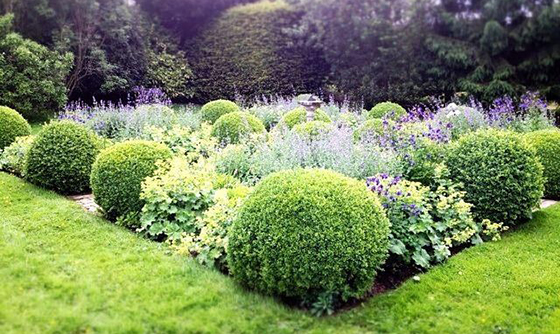
Plants
We're going to use boxwoods as the plant in these examples. They're the most easy to read when used repeatedly. Here they're used in repetition (this is four quadrants separated by paths). This creates the corners of a parterre filled in with matched sets of perennials. This appears more aspirational than it is!
Below: A low hedge of boxwoods creates an soothing, unbroken line. A trio of matching boxwoods creates movement while keeping it simple.
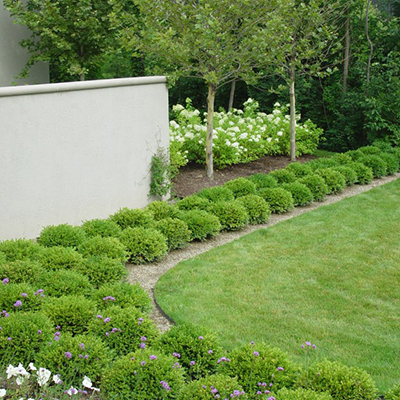

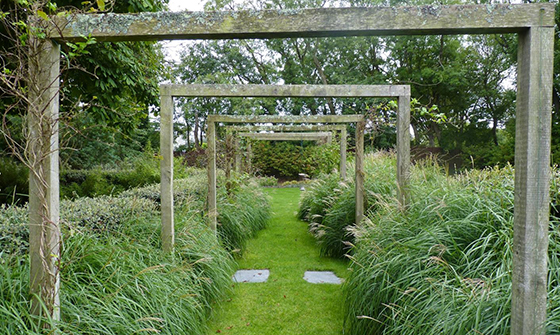
Hardscape
In these examples, hardscape elements are used repeatedly to emphasize the depth or length of a space. These weathered arches draw you in, daring you to not follow them through to their end destination. The repeated use of the same grass has the effect of uninterrupted flow. You could do this on a smaller scale just arching over the walkway up the front door.
Below: The line of large concrete orbs is exciting and visually stimulating. The repeated pattern of the stair steps helps to create an unbroken line that feels good.
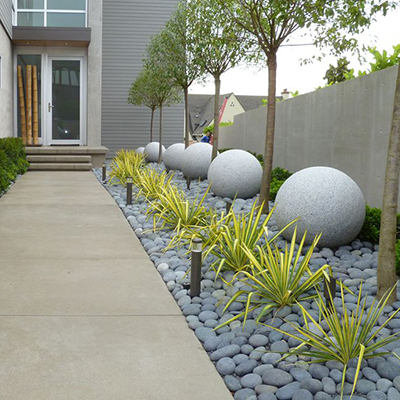

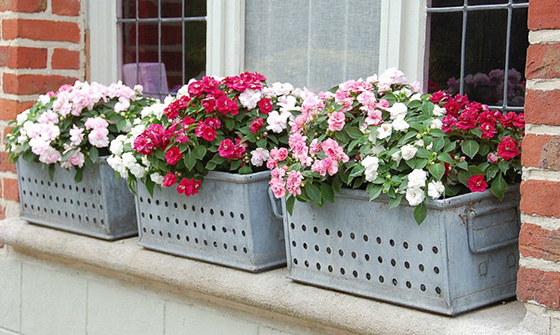
Pots
Of course if you don't want to take on a landscaping project, just buying matching pots. Plants can also produce the easy sophistication that comes with the use of repetition. How natural does this trio of zinc containers look when planted with the same variety in different colors?
Below: While this is a larger-scale version, the idea is the same. Create a line that the eye keeps traveling while producing a feeling of ease. And, this grouping of repeated exactly matching potted trees. With a soft underplanting would be an answer to how to break up a long, boring wall.
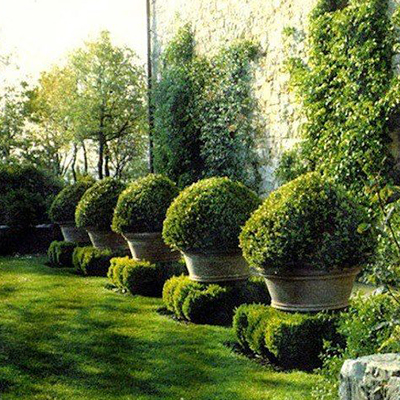
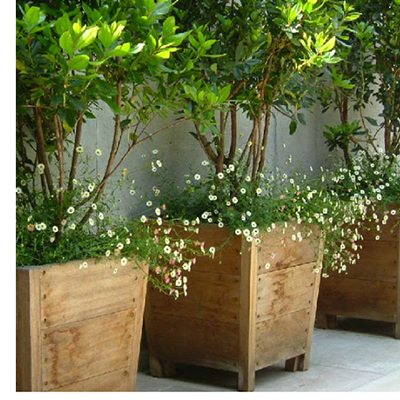
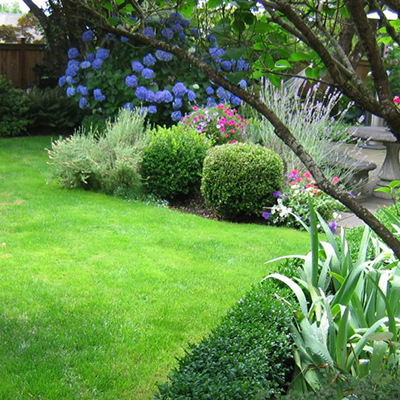
So, there you go.
The next time you're watching some tv show and a landscape designer speak about the use of repetition. As well as the magic it brings to a landscape, you'll just nod in agreement!
And, you’ll see a picture like this and just know…if only they had added one more of those boxwoods!
Lead Image: Carolina Landscape Service Inc., Charleston, SC (carolinalandscape.net)




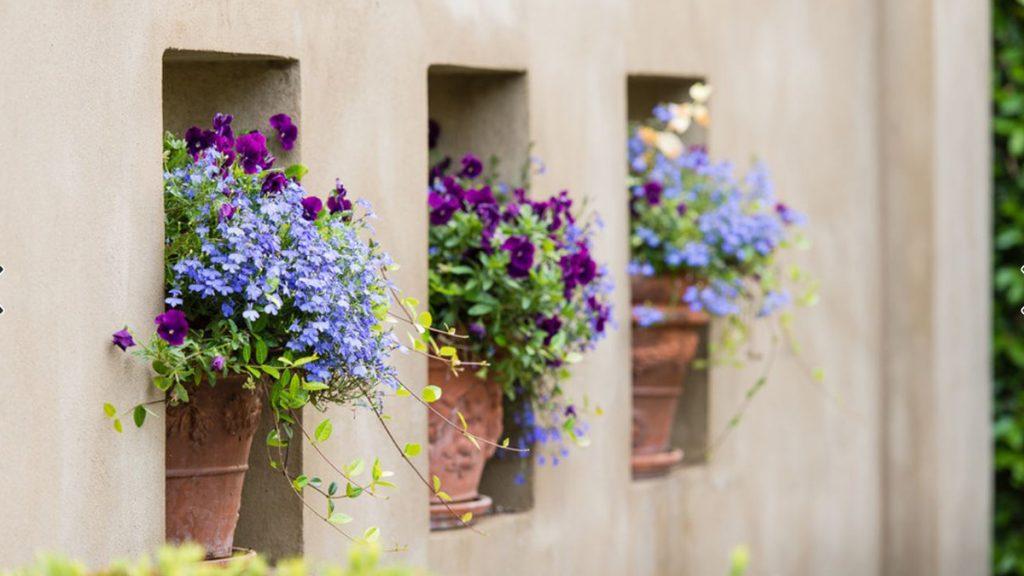
Please login to comment.
Don't have an account?
Sign Up for free